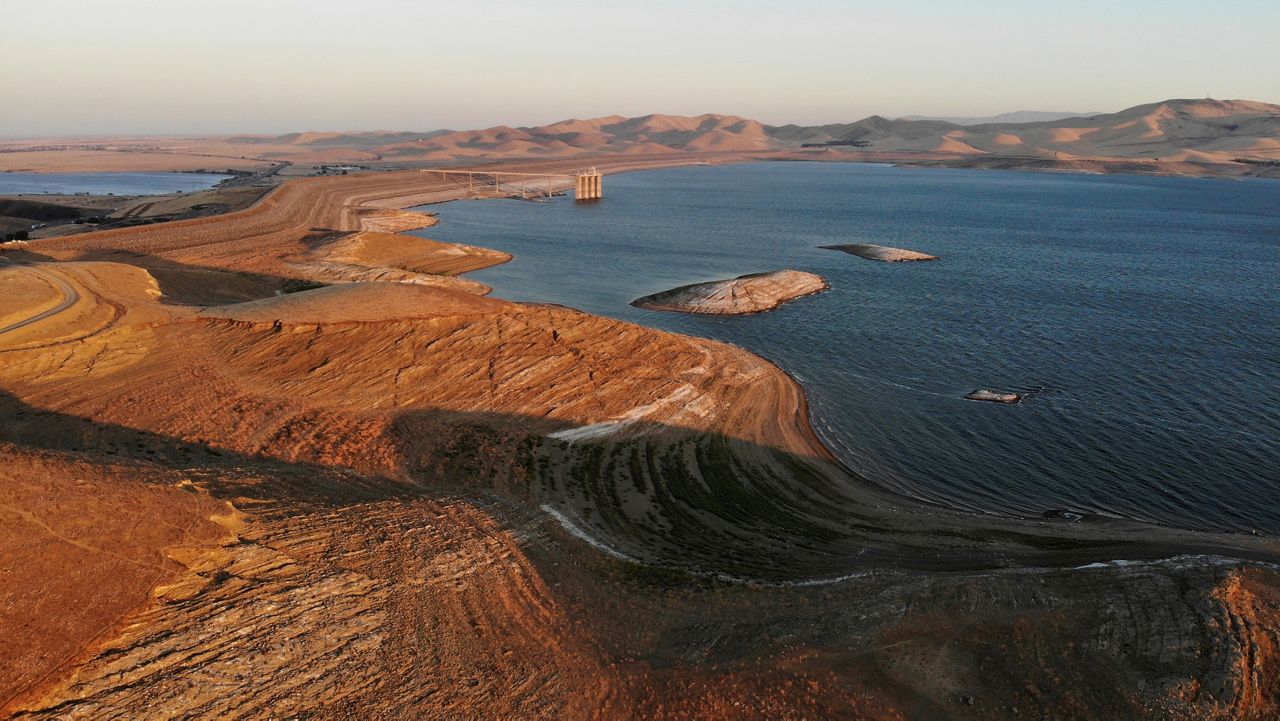LOS ANGELES (AP) — Atmospheric rivers pounding California since late last year have coated mountains with a full winter’s worth of snow and begun raising reservoir levels — but experts say it will take much more precipitation to reverse the effects of years of drought.
The U.S. Drought Monitor’s weekly update released on Thursday showed that “extreme” drought has been virtually eliminated a week after the worst category — “exceptional” — was washed off the map. Two weeks ago extreme drought covered 35% of California.
The Drought Monitor characterized the improvement as a significant reduction in drought intensity but cautioned that large parts of the state have moisture deficits that have been entrenched for two or three years.
Most of the state is now in the “severe” or “moderate” categories of drought, with small areas in the far northwest and far southeast in a status described as “abnormally dry,” which is the lowest level.
After significant damage to some communities and at least 18 deaths, California was in a lull between storms Thursday, but more precipitation was expected to arrive on Friday and continue through the weekend. Flooding remained a concern, especially along the Salinas River in Monterey County, because so much rain has fallen.
Downtown San Francisco, for example, received nearly 13.6 inches of rain from Dec. 26 to Jan. 10. Snowfall so far this season at the summit of the Mammoth Mountain resort in the Eastern Sierra hit 444 inches.
In the Sierra Nevada and other mountains, the water content of the snowpack is more than 200% of normal to date and more than 100% of the April 1 average, when it is historically at its peak, according to the state Department of Water Resources.
“The automated sensors are registering what they would consider a full seasonal snowpack, about what we would expect on April 1,” state climatologist Michael Anderson told reporters this week.
The snowpack supplies roughly a third of California's water when it melts and runs off into rivers and reservoirs.
Locally, some reservoirs have seen significant rises in water levels but there are still significant deficits to overcome.
Statewide, reservoir storage is only 82% of average for this time of year. The largest reservoir, Shasta, is at just 44% of capacity. That's only 70% of average to date. The huge Oroville reservoir is closer to its average but at just 49% of capacity.
And there's concern that the rains could abruptly stop. The end of 2021 was marked by significant storms, but the start of 2022 saw months of bone-dry weather.
There are some hints of a drier pattern developing around Jan. 20, said Daniel Swain, a climate scientist at the University of California, Los Angeles, during an online briefing this week.



